Are you a Quiet Speculation member?
If not, now is a perfect time to join up! Our powerful tools, breaking-news analysis, and exclusive Discord channel will make sure you stay up to date and ahead of the curve.
I don’t know about you, but I plan on 2017 being anything but business as usual. In the coming weeks, expect some changes to my column here on Modern Nexus (hopefully for the better!) This week, I’m taking one of my new year’s resolutions—to get organized—and applying it to Modern Magic. Too often over this past year I was surprised by a Grand Prix or other high-profile Modern event popping up when I wasn’t prepared for it. So, today I’ll be laying out the year in Modern Magic, organizing Grand Prix, smaller events, larger events, set releases and B&R updates alongside each other to (hopefully) present a reference that players can look back to the entire year. As I’m still me, and can’t resist spicing things up a bit, I’ll use this data as a framework to speculate on Wizards’ thought process behind their format allocation. Let’s get started!
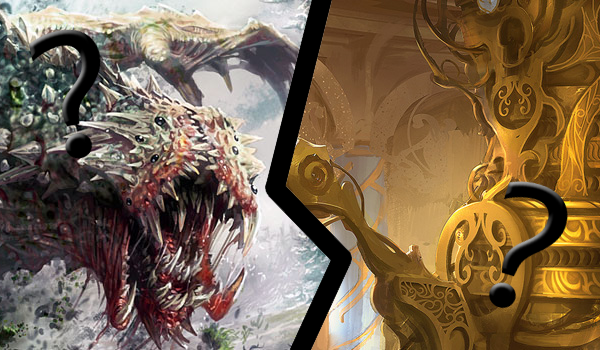
The 2017 Lineup
First, the roster of major tournaments:
[wp_ad_camp_1]
| Event | Date |
|---|---|
| SCG Season One Regionals | Feb 4 |
| Grand Prix Vancouver | Feb 17-19 |
| Grand Prix Brisbane | Feb 17-19 |
| SCG Open Indianapolis | Feb 25-26 |
| SCG Open Dallas | Mar 11-12 |
| Grand Prix San Antonio* | Mar 31 - Apr 2 |
| SCG Open Baltimore | May 27-28 |
| Grand Prix Copenhagen | May 26-28 |
| Grand Prix Kobe | May 26-28 |
| SCG Open Charlotte | Jun 10-11 |
| Grand Prix Las Vegas | Jun 16-18 |
| SCG Season One Invitational** | Jun 30 - July 2 |
| Grand Prix Birmingham | Aug 11-13 |
| Grand Prix Sao Paulo | Aug 11-13 |
| 2017 World Magic Cup*** | Dec 1-3 |
| SCG Season Two Invitational** | Dec 1-3 |
| Grand Prix Oklahoma City | Dec 8-10 |
| Grand Prix Madrid* | Dec 8-10 |
*Team Unified Modern
**Split format Standard/Modern
***Split format Team Sealed/Team Unified Modern
As of January 1st, this list is up to date with all major tournaments known so far. (If I've missed any major third-party tournaments outside of North America, let me know in the comments—in any case these are not on my radar for travel.) Star City Games has only released SCG Open Series dates and locations through June, so be sure to check back at some point in the future when they release the second half of their Open Series offerings. Wizards schedule for premier events can be found here.
So, what can we take from this list? 2017 is not lacking when it comes to high-profile Modern events, with Grand Prix events in February, March, May, June, August, and December, and SCG Tour offerings most months. 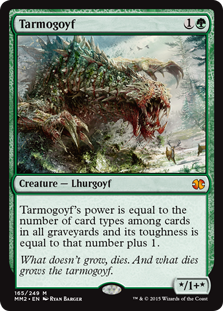 Both organizations are choosing to skip April for some reason (not counting Grand Prix San Antonio, which falls on the March/April border), but beyond that Modern events in 2017 are relatively spaced out.
Both organizations are choosing to skip April for some reason (not counting Grand Prix San Antonio, which falls on the March/April border), but beyond that Modern events in 2017 are relatively spaced out.
It’s interesting to note that Wizards’ double-GP weekends featuring Modern worldwide always follow a month of no Modern Grand Prix events whatsoever. January: no Grand Prix; February: two events. April: no Grand Prix; May: two events. July: no Grand Prix; August: two events. November: no Grand Prix; December: two events. I can’t speak to Organized Play’s sinister motivations, but this clearly seems to me a strategic attempt to motivate interest in attendance at Modern events by restricting their regularity in the public eye. With a Modern Grand Prix every month, it seems their thought process is that players would get tired of a format that has historically been labeled "stale" on the main stage. By spacing out events, leaving more time for set releases and changes in the metagame, Organized Play hopes to see a better turnout at these types of events when they do come around.
Whether this is actually true or not is hard to tell, but it doesn’t seem to be too much of a stretch. Wizards’ has shown at least a hint of a subterranean desire to distance itself from some of the public relations difficulties of our format by removing Modern from the Pro Tour entirely. Professional players and guests to our corner have complained about the format, while die-hards have gone crazy when their favorite decks were (deservedly or not) banned for various reasons. The glory days of Modern aren’t necessarily behind us, but I would expect this to be the new norm going forward unless serious changes happen to Standard or Organized Play.
A Comparison of Format Support
Still, it’s not like Wizards and Star City Games are leaving Modern out in the cold. You guys said you wanted statistical analysis, so here we go!
Yearly Changes (2015 - 17)
Shown below is a simple line graph visualizing the format distribution for Wizards' Grand Prix events, going back two years. For the purposes of this exercise, I'm leaving off Pro Tour events, and lumping mixed-format events in the "other" category. The purpose of this distinction is to (hopefully) isolate the "pure" events—that is, all-Modern, all-Standard, and all-Limited—to try and find a correlation or pattern over time. The math can get a little sticky at times, so stick with me. For example, in this section we're including the Super Sunday Series and MTGO Championship while omitting Pro Tours, while in the following section below the opposite is true.

So, what can we take from this information? Excluding Pro Tours, Wizards' premier events for the past two years total 53 for 2015, 48 for 2016, and 57 for 2017. It's interesting to note the decline in events in 2016, but that's a whole other topic in itself. Really, what we're looking at is the history of Modern offerings over the past two years and how it compares to now. Looking at the chart, the total number of Modern offerings has grown steadily over the past two years, from 8 in 2015, to 9 in 2016, to 11 in 2017. 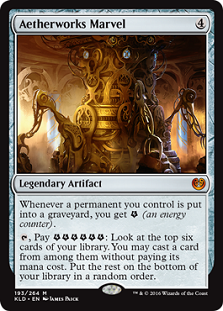 Modern is growing in representation on Wizards' premier event stage, even when the total number of events shrinks (48 in 2016, from 53 in 2015). To me, this shows at the very least continued dedication to a format, even if there are no plans to feature that format on the Pro Tour stage. Based on the data, nothing gives me cause to believe Wizards' might one day give Modern Grand Prix the ax out of nowhere (regardless of what they do with banlist decisions!). Modern is growing, so take delight.
Modern is growing in representation on Wizards' premier event stage, even when the total number of events shrinks (48 in 2016, from 53 in 2015). To me, this shows at the very least continued dedication to a format, even if there are no plans to feature that format on the Pro Tour stage. Based on the data, nothing gives me cause to believe Wizards' might one day give Modern Grand Prix the ax out of nowhere (regardless of what they do with banlist decisions!). Modern is growing, so take delight.
But can't Modern's growth just be attributed to the overall number of Grand Prix going as well? Possibly, but take a look at that Standard data in the chart above. In 2015, Wizards offered 20 Standard Grand Prix, while in 2016 and 2017 they are only bringing 19 events to the table. Sure, this isn't a huge difference, but Standard is their flagship format—during a period of growth of the Grand Prix circuit overall, you would expect it to follow suit. Instead, 2017's nine extra events are distributed among Modern, Limited, and special events. Limited is receiving five extra events, up to 22 from 17.
Why then would Wizards increase Limited offerings, yet keep Standard Grand Prix stagnant? For me, I pin this on the Star City Games Open Series. With events every weekend (and arguably better coverage), SCG has carved out a niche for themselves, wresting viewers away from Wizards towards their own streams. As their events are primarily constructed formats, I would hypothesize that Wizards has crunched the numbers and found the best place for their coverage rests in the Limited market.
Zeroing in on 2017
Next let's take a closer look at the 2017 events to see how the Modern offering compares to the other formats. For this section we'll be including all Pro Tours, Grand Prix, and special events. With 59 official Wizards event offerings in 2017, 11 of those feature Modern in some significant manner. This is actually up from 9 Grand Prix in 2016, and 8 events in 2015. 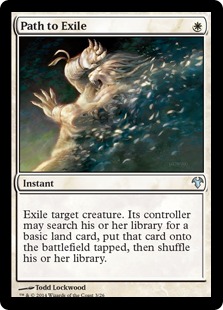 Part of this is due simply to the fact that more Grand Prix events are being held. But it's worth noting that Modern events are growing in regularity along with other formats, in spite of Wizards' rumored dislike for the format.
Part of this is due simply to the fact that more Grand Prix events are being held. But it's worth noting that Modern events are growing in regularity along with other formats, in spite of Wizards' rumored dislike for the format.
The 59 premier event offerings are split like so: 23 Standard events, 11 Modern events, and 25 non-Standard/non-Modern events (almost entirely Limited, with some Team Limited and Legacy sprinkled in). As percentages, this breaks down to 39% Standard, 18.6% Modern, and 42% mostly-Limited. This is surprising (to me at least) because it goes against the narrative I’ve held personally, and the general attitude in Modern circles, that Wizards’ is abandoning the format. If we ignore the issue of the canceled Modern Pro Tour (which we have already debated at length and could easily spend an entire article rehashing), the stats reveal that Wizards is only offering Standard events at double the rate of Modern. They are actually offering more pure Limited GPs than Standard GPs, since the four split-format Standard/Limited Pro Tours are included in the "Standard" category. So yes, Modern definitely is Wizards’ third format, but it’s not that far behind the other two.
Format Representation
Or is it? Another way to look at this information is based on representation, or how many times the format is "presented" to the public. Remember above, when we talked about some possible motivations behind Wizards’ tendency to do double Modern GP weekends? If the goal is to control the narrative, how often is the general public seeing Modern on their computer screens when they fire up Twitch on a given weekend?
Of the 37 weekends in which Wizards is hosting a Magic Grand Prix, Pro Tour or special event, the breakdown between formats is as follows:
2017 Major Event Breakdown by Format
| Format/Event Type | # of Events | Percentage of Total |
|---|---|---|
| Pro Tour | 4 | 10.8% |
| Standard | 11 | 29.7% |
| Limited | 12 | 32.4% |
| Modern | 7 | 18.9% |
| Other | 3 | 8.1% |
Raw number of events is a useful metric to analyze, as those of us who love Modern are well used to being starved for data and decklists from high profile events. Still, if we’re investigating frequency of format compared to other offerings, treating multiple-event weekends as one seems to be a better indicator of true market division. After all, who is playing in multiple Grand Prix on the same weekend? Who is watching multiple Grand Prix streams?
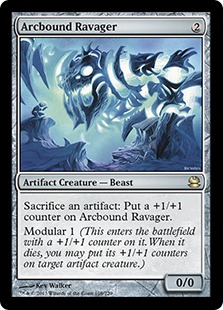 So with 37 weekends of Magic play, Modern holds 7, compared to 11 for Standard and 12 for Limited (not counting Pro Tours). When viewed this way, it would seem that the divide between Wizards’ redheaded stepchild and its favorite twins is closer than we’ve been led to believe. Take one weekend from Standard and two from Limited and give them to Modern, and we’re even across the board, right?
So with 37 weekends of Magic play, Modern holds 7, compared to 11 for Standard and 12 for Limited (not counting Pro Tours). When viewed this way, it would seem that the divide between Wizards’ redheaded stepchild and its favorite twins is closer than we’ve been led to believe. Take one weekend from Standard and two from Limited and give them to Modern, and we’re even across the board, right?
Unfortunately, it’s not that simple. We’ve forgotten to include the Pro Tours, which at worst should be applied to both Standard and Limited’s totals, and at best should be weighted in terms of importance. Last year I rarely had a weekend off to watch Magic event coverage, but you can bet I made sure to tune in to Pro Tour coverage, or at least catch replays of it. We have four of them, so we can’t really call them our Super Bowl, but they are definitely our Playoffs. To talk about public representation without accounting for Wizards' flagship promotional vehicle would be silly, to say the least.
To try to account for the increased importance of these events, I will weight them double (and an argument could be made for triple). Coverage at the PT spends roughly double the amount of time on Standard (10 Swiss rounds plus the Top 8) as on Limited (two draft portions plus six rounds of play). Thus we'll distribute the Pro Tour "points" in a 2:1 ratio to Standard and Limited. Here's what the breakdown looks like after all that:
2017 Major Event Breakdown by Format (Weighted)
| Format/Event Type | # of Events (Solo) | Modified Pro Tour Score | # of Events (Weighted) | Percentage of Total |
|---|---|---|---|---|
| Standard | 11 | +5.33 | 16.33 | 40% |
| Limited | 12 | +2.66 | 14.66 | 35.75% |
| Modern | 7 | - | 7 | 17% |
| Other | 3 | - | 3 | 7% |
With this shift in place, we’re back to Modern as a clear third-option to Standard and Limited, which isn’t that surprising. What sticks out to me more is the large representation of Limited on the professional stage. For a player like me (competitive, doesn’t draft outside of MTGO, doesn’t watch much coverage), seeing this level of dedication to high-profile Limited play is interesting.
I guess I shouldn't be surprised, given the level of infatuation many of the commentators show towards Draft on each Pro Tour, but I always assumed they were just acting excited to hype up the set and sell their role as commentator. With Star City Games offering almost exclusively Standard/Modern events, I’m beginning to see under the hood a bit and recognizing Wizards’ desire to capitalize on the Limited niche they currently hold a monopoly in.
Long Live Modern
Personally, I found this process interesting as it revealed to me exactly how far behind the "Big Two" Modern lags, and how the numbers bear out a possible reasoning for the clumping of events that we see throughout the year. This ever-present narrative of Modern as the redheaded stepchild is partially true, but the numbers show a policy that doesn't necessarily leave Modern out to dry. 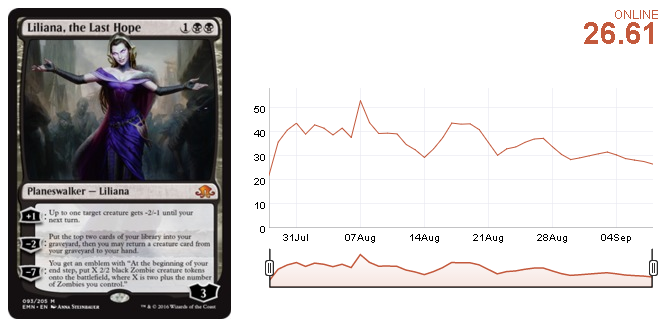 With an increase in events year-after-year, coupled with an absolute decrease in Standard offerings, fans of Modern can hardly claim Wizards is abandoning their format.
With an increase in events year-after-year, coupled with an absolute decrease in Standard offerings, fans of Modern can hardly claim Wizards is abandoning their format.
Sure, the removal of Modern as a Pro Tour format is a whole other topic—but our beloved format on the highest competitive stage has proved problematic in the past and carries with it a myriad of issues. When viewed in comparison to the Standard and Limited offerings, along with the Star City Games events, it's clear to me that Wizards has deliberately relegated Modern to "third-format" status, but that it still intends to support it robustly. While Modern remains secondary as far as official Wizards coverage goes, it's worth recognizing that we, as players, are experiencing no shortage of Modern content in 2017, compared to other formats.
Hopefully this article will be an informative reference when discussion of Wizards’ feelings regarding Modern eventually resurface. And if that never happens (yeah, right) at least it can be used as a quick reference to check the date of the next Modern event! Let’s go, 2017!
Thanks for reading,
Trevor Holmes
The_Architect on MTGO
Twitch.tv/Architect_Gaming
Twitter.com/7he4rchitect


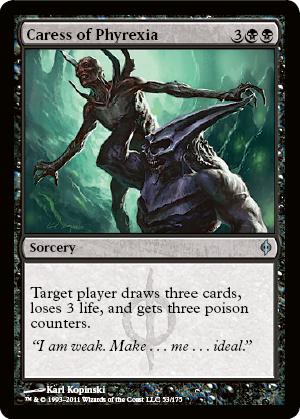


Your line graph comparing format representation over the years was hard to make sense of because of the choice of similar blues. Had they been red, blue, green, and yellow for example it would have been easier to analyze. Thanks for taking the time to crunch the numbers tho.
That makes sense. We’ll keep that in mind next time.
Good stuff trevor – im not sure how to boil this down to one number and wish that had been the takeaway. “Wizards doesnt hate modern” is an okay conclusion, but something like “roughly 20% of major event activity is modern – 40% is standard, 35% is limited, 5% is other” is a lot easier to digest. I think thats roughly where we end up, but im paraphrasing the numbers I see above (and rounding generously). Being one third of the big formats and getting 20% of the activity isnt a terrible spot to be in given we know its the other two that sell the most product
WOTC has announced the return of Nationals as a standard event, the end of team unified modern in the World Cup, and the end of GPTs at the local store level. The latter especially seems like a damaging move for modern’s growth at the grass roots of the game’s playerbase. Unless WOTC introduces a modern championship event with its own qualifiers, just how many people will have large-scale modern events to attend? I am fortunate enough to have large stores and multiple modern events on a weekly basis, but it is a bit of a concern to see that it can’t lead to a GPT or PPTQ in modern for a random saturday.